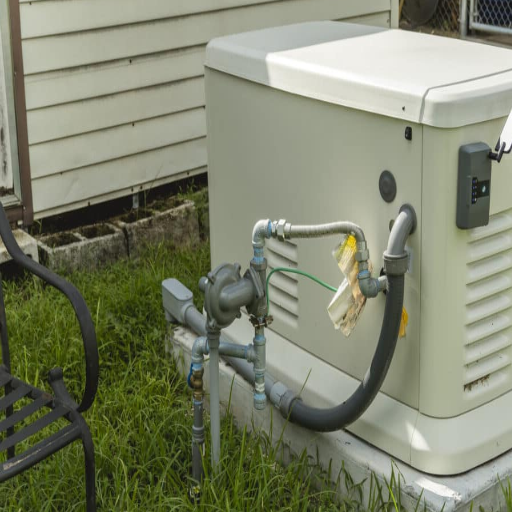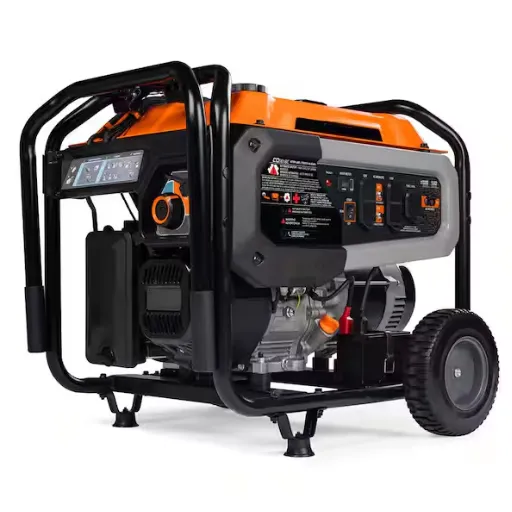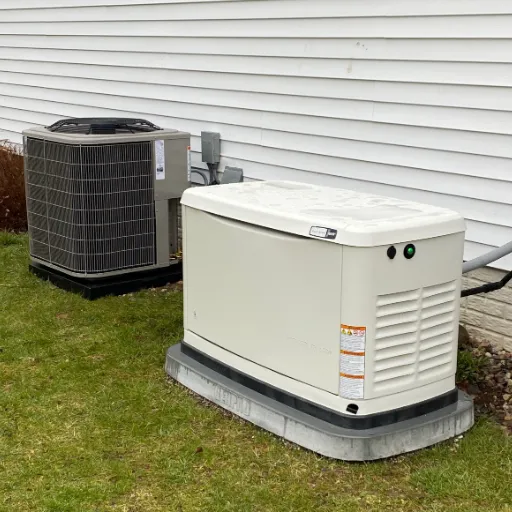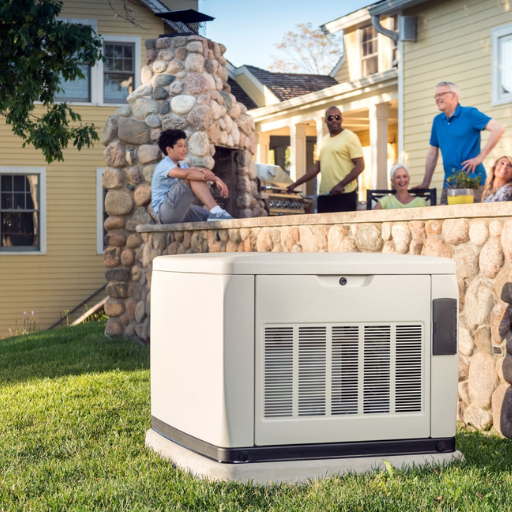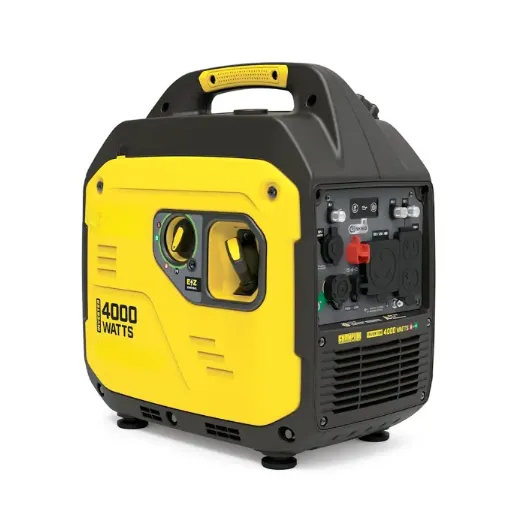Installing a natural gas generator is a critical step in ensuring uninterrupted power for your home during outages or emergencies. These systems are designed to deliver reliable, efficient energy by utilizing an existing natural gas supply, making them an excellent choice for homeowners seeking consistent backup power. Choosing a professional installation service is vital to guarantee that the generator operates safely and meets all local codes and regulations. This article will guide you through the importance of professional natural gas generator installation, and provide insights on how to locate trusted installers near you for a seamless and efficient setup tailored to your home’s power needs.
What Does Professional Standby Generator Installation Include?
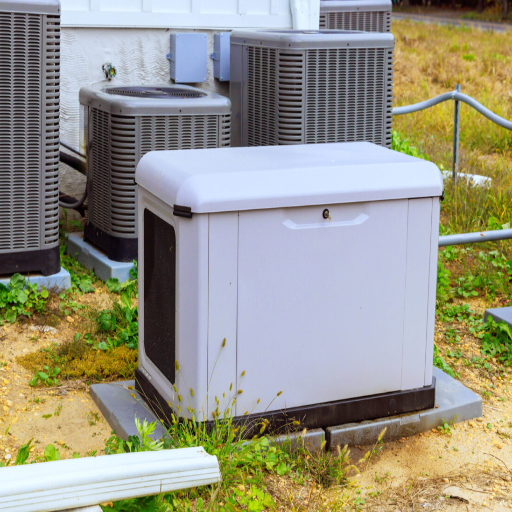
Complete Installation Process for Home Standby Generators
Achieving optimal safety, compliance, and functionality of home standby generators requires installation in several critical steps. First, a site assessment is conducted to determine the optimal clearance requirements for the generator location. This is then followed by a selection of an appropriate generator model based on the home’s required power, which is generally calculated by assessing the essential appliances and systems in the home. For example, a 22 kW generator would be ideal for an average-sized home expected to have central air conditioning along with other standard appliances.
Once the model has been selected, the installation team pours a concrete or composite pad to serve as a base for the unit to help stabilize it. Electrical work involves connecting the generator to the transfer switch which controls power from the utility or generator and must be wired to NEC standards to avoid overloading and other electric hazards. The generator is connected to a natural gas and propane fuel source which must be set to proper gas pressures, five to seven WC for natural gas and 10 to 12 WC for propane, depending upon the manufacturer.
To check if the generator can successfully manage the expected electrical demand, a complete testing and commissioning process is conducted, which includes load testing. The installer also provides operational training, showing the start-up steps as well as routine maintenance activities like changing oil and filters every 100-200 hours of usage. This process ensures that installation is done in a manner that achieves reliability, efficiency, and compliance with all technical and safety requirements for the long haul.
Electrical and Fuel Connections for Natural Gas Generators
The conductors must be appropriate for the power rating of the Natural Fuel Generator and must observe the guidelines of the National Electrical Code (NEC). As an example, if a generator works at 240 volts and has 50 amps output, the wires need to be sized for this level of current. In this case, 6 gauge copper conductors are necessary from a safety aspect. If a generator has an operational current output of 50 amps and expects to work at 240 volts, then the wiring has to be able to cater to this amount of Electrical Current.
The generator also has to be connected to a natural gas line of adequate size to provide a fuel supply. In this case, the sizing of the pipe is determined by how much fuel the gas generator will use which is normally measured in cubic feet in an hour. A 20-kilowatt gas generator for example may need a gas flow of 250 CFH which therefore means it requires at least around 1-inch diameter pipes under average pressure zones which is around 6-7 inches water column.
For overall safety and reliability, all connections have to be made leak-tight and ensure to have manual or automatic shut-off valves. Moreover, restrictions according to Construction Codes in the region, together with regular examination and maintenance, have to be respected so that the system functions in a fully safe manner and with high efficiency.
Smart Home Integration and Automatic Transfer Switch Installation
The integration of a smart home allows the effortless supervision and control of transfer switches which guarantees that critical loads are powered on during outages. These sophisticated systems enable remote supervision, fault alerts, and usage analysis through mobile or web applications.
- Voltage Rating: Confirm that the ATS is suitable for the voltage rating of the electrical system which is 120/240V for household units and 208/240/480V for commercial units.
- Current Rating: The switch must be able to tolerate the highest current load which usually ranges from 50A to 400A will be most likely determined by the size of your system.
- Switching Time: The time it takes to transfer must be simulated with as little delay as possible, usually taking between one and three seconds to sustain critical load continuity.
- Power Source Compatibility: Check the generators and inverters along with the grid connections to the ATS and determine their output features for sine wave creation and load capabilities.
- Control Mechanism: Check that the ATS allows for manual handling in addition to automatic functions for flexible operations.
Installation should follow local Electrical Codes such as NEC in the United States, to prevent dangers and assure system dependability. Integrating smart systems with ATS technology optimizes energy management, leading to an improved resilient power infrastructure. For lasting dependability, periodically checking ATS functionality along with smart control systems software updates is essential.
How Much Does Natural Gas Generator Installation Cost?

Factors That Affect Home Generator Installation Pricing
A home natural gas generator’s installation is subject to various expenses which vary depending on, but are not limited to the generator’s power rating, how involved the installation is, the location of the site, preparation required, and labor costs in the region. In my view:
- Generator Capacity (kW Rating): A house’s energy requirements will determine the size of the generator that is needed. Smaller houses generally can get by with a 10-20 kW generator whereas bigger houses often have to use 22-48 kW models. A higher capacity generator is guaranteed to supply critical systems and other aspects with power, however they do cost more.
- Installation Complexity: If an installation is straightforward, it is often cheaper than an installation that requires an extensive amount of wiring modification like integrating a new main panel or making changes to the preexisting circuits.
- Site Preparation: The pad may need to be leveled or safety clearance requirements may need to be met before the installation site can be worked on. This can increase the expense during preparation.
- Permits and Local Labors: Getting a permit from a local authority can increase the cost, which varies from one area to another. Moreover, the average price charged by local permit-possessing electricians and technicians is also a factor in the final price.
- Connection to Gas Supply: The cost associated with connecting the generator and gas supply depends on how far away the gas line is from the generator. Greater distances increase expenses due to the need for additional piping and labor.
While estimating these costs, compliance with local building and safety codes, including the National Electrical Code, needs to be factored into the costing. This directly relates to dimensions, reliability, and how well the generator works with the electrical system of the house.
Long-term Maintenance Costs to Consider
A generator’s frequent maintenance costs cover all attributes that allow it to sustain optimal performance and safety. A few of these costs incorporate regular servicing, oil changes, replacement of filters and spark plugs as well as the coolant.
- Maintenance Schedule: Standby models require servicing after every 200-400 hours of operation, or according to manufacturer guidelines.
- Replacement of the oil and filter: Depending on the type, oil changes are manifested every 50-200 hours with filters being replaced at major servicing.
- Battery Inspection: Periodic testing is needed to maintain charge capacity, normally every 6-12 months. Replacement is necessary every 3-5 years based on conditions and usage.
- Coolant System: In the case of liquid-cooled generators, monitoring the coolant levels and condition is a must to prevent overheating. Coolant is recommended to be replaced every 1,000 hours or five years adhering to manufacturer guidelines with coolant-type, Ethylene glycol-hosted.
- Fuel System Maintenance: If the generator is diesel-powered, fuel should be treated to prevent contamination and algae growth. Fuel filters also require replacing every 250 hours or as specified.
- Inspection of Electrical Components: Continuity of wiring, connections, and transfer switches (if included) must be checked to ensure electrical safety and uninterrupted power supply.
Following these maintenance schedules will help the generator last longer, operate efficiently, and prevent costly repairs or breakdowns. However, it is still important to ensure that all maintenance activities are conducted in consideration of the manufacturer’s guidelines and regional laws for dependability and security.
Which Type of Generator Is Best for My Home?
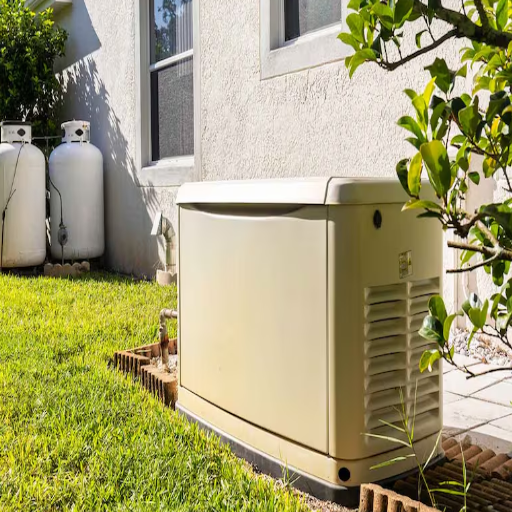
Comparing Whole House Generators vs. Essential Systems Coverage
Whole-house generators can restore the power in a home during an outage. Because everything including, systems, appliances, and electrical devices remain operational, these generators are ideal for large households with critical powering systems, serving medical purposes or aiding security systems. The power output typically ranges from 22kw to 48kw, operating on an above-average level compared to other types of generators. The fuel, which this type of generator uses, is usually propane or natural gas. Because these generators are permanently affixed to the home, they are highly reliable.
- Power Output (kW): Power output is defined based on the total wattage a generator serves for the entire house or selected circuits only. Load calculations will determine the capacity that must be met. The output power required will depend on the wattage needed by the house or circuits. Determining how much each section needs, load calculations is very important.
- Fuel Type: While portable gasoline-powered generators can be used to cover essentials only, natural gas and propane are commonly used for whole-house systems. While essential systems can use a portable gasoline generator, whole-house systems mostly rely on natural gas or propane.
- Installation Requirements: Essential systems only require a manual transfer switch for some circuits while for whole-house generators, a fully automatic integration that includes an automatic transfer switch with the home’s electrical system is needed. The non-automatic essential systems can use a manual transfer switch, unlike the whole house generators that depend fully on the home us automatic integration and transfer switch.
- Cost: For coverage of essentials only, costs are relatively cheaper than whole house generators which start from $500 and can go up to $5,000 whereas whole house systems come from the ranges of $5,000 to $15,000 including installation cost. Whole house generators are more expensive, with costs ranging from $5,000 to $15,000 including installation, compared to $500 to $5,000 for essentials coverage.
Matching the correct generator to a home is dependent on the size and budget as well as energy needs. A capacity and configuration estimate can be streamlined with the help of an energy audit.
Natural Gas vs. Propane: Choosing the Right Fuel Type
Unlike propane, I have direct pipeline access to natural gas, which means that I do not need to store fuel on-site. Most importantly, natural gas is often more economical and cleaner than other fossil fuels because it emits less carbon. However, similar to propane, it must be stored onsite under certain conditions. Moreover, natural gas supply depends on utility lines, which can be problematic during extreme weather conditions or events.
Compared to natural gas, propane is even more cost effective with an energy density of 91,500 BTU per gallon compared to the 1,030 BTUs per cubic foot of natural gas. Propane clearly wins on volumetric efficiency. It is also stored at the site which makes it immune from propane utility service disruption; however, continual monitoring and refilling is needed. In addition, propane outperforms natural gas in cold weather, where fuel flow problems have the potential to cause blockages in propane fuel lines.
In the end, a multitude of factors like availability, cost, climate, and energy output determine whether I go with natural gas or propane.
Portable vs. Standby Generators: Pros and Cons
Below are the advantages and disadvantages of each:
- Portable Generators
Pros
- Flexibility and Mobility: These generators are easy to transport and can be moved to different locations, making them great for outdoor events or temporary power needs.
- Lower Initial Cost: They are more affordable than standby generators as they are priced between $500 and $2,500 depending on the capacity.
- Simpler Installation: Unlike standby generators, portable generators do not require permanent installation as they use a plug-and-play mechanism.
Cons
- Limited Power Output: Portable generators cannot sustain larger homes or heavy equipment as most models range between 2,000 to 10,000 watts.
- Manual Operation: During long outages, manually refueling and starting the generator can become inconvenient.
- Noise and Emissions: Compared to standby systems, portable generators operate at higher decibel levels and use more carbon emissions per unit of power.
- Standby Generators
Pros
- High Power Capacity: Standby generators have the highest output power which ranges between 8,000 to 150,000 watts, making them suitable for entire homes or commercial use.
- Automated Operation: Power interruption is no longer a concern with standby generators as they are equipped with automatic transfer switches, ensuring seamless start.
- Fuel Efficiency: There is no need for manual refuels as this type of generator can connect to existing propane and natural gas lines.
Cons
- Higher Cost: The price for standby generators is remarkedly higher ranging from $2,000 to $20,000. The cost of installation further raises the total expense significantly.
- Permanent Installation: Professional implementation is required and may need local regulations or permits.
- Immobility: The spatial placement of the component is fixed, and as such, can only be used at the location it was set up in.
When it comes to portable or standby generators, your selection should depend on the intended use, power requirements, and cost. Portable generators are more useful for short-term, mobile power sources, while Standby generators are better for long-term, stationary power sources.
How Long Does Generator Installation Take?
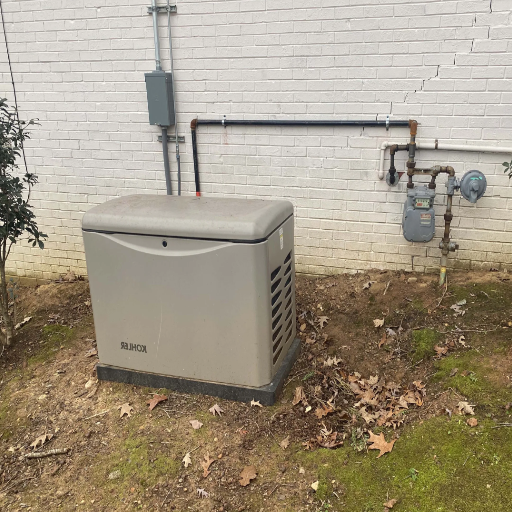
Typical Timeline for Home Standby Generator Installation
The home standby generator is expected to be placed within one to five days. The timeframe is subjective in several aspects. At first, a site survey is needed to check for the generator’s optimal placement and whether it meets local zoning restrictions, which takes a couple of hours.
- Site Preparation: Preparing the site includes leveling, pouring a concrete pad, or building a gravel base which requires, on average, 4-6 hours.
- Electrical Work: Installing the generator to the transfer switch and linking it to the house’s wiring can take, on average, 8-12 hours.
- Fuel Connection: Propane, diesel, and natural gas are among the most commonly used sources of fuel. This requires the most secure connection and rest assured thorough testing which may take an average of 4-8 hours.
Subsequent to an installation, a system efficiency test alongside a detailed inspection is run as a safety measure. Factors such as how complex the installation is, the current state of the electrical system, along with the fuel type, have the potential to impact the time frame. However, quality planning in conjunction with professional service minimizes any risk of turbulence in the processes.
Permits and Approvals Required Before Installation
Prior to the setting up of a standby generator, it is vital to ensure that all permits and approvals are obtained. This will guarantee that all local regulations and building standards are fully complied with. Some of the specific permits needed might include an electrical permit, a plumbing permit for the fuel connections, and in some areas, a building permit as well.
- Generator Specifications: The power offered (for example, 20KW or 22KW), fuel type (natural gas or propane, diesel), and noise level (in decibels) are all extremely important details.
- Placement Requirements: Generators have to follow the set clearance requirements which vary from a minimum of 5 feet from openings or other combustible materials as per the National Fire Protection Association (NFPA) rules.
- Electrical Compliance: National Electrical Code (NEC) standards must be met under transfer switch rating, wiring type, and system capacity design.
- Fuel System Safety: Safety regulations for fuel must be complied with in terms of proper piping design, pressure rating, and venting.
Attending to these permits and technical requirements in advance prevents obstacles from arising while guaranteeing safe and compliant installations.
What Maintenance Will My Natural Gas Generator Need After Installation?

Regular Maintenance Schedule to Ensure Reliable Backup Power
To guarantee that your natural gas generator services run smoothly, efficient operation, along with reliable performance, requires strict adherence to a maintenance checklist.
- Oil and Filter Changes: As stated by the manufacturer, oil and filters should be replaced every 100-200 hours of operation. SAE 10W-30 oil, for most climates, meeting the API classifications should be used, to ensure adequate lubrication of the engine.
- Spark Plug Inspection: Spark plugs should be cleaned and checked once every two hundred hours or at most, annually. They should be replaced in a timely manner in order to keep the ignition systems and engines operating optimally.
- Cooling System Maintenance: Monthly checks on coolant levels are important as well as ensuring a 50/50 ratio of coolant to water as recommended by the manufacturer.
- Battery Check: Every month, it is important to ensure the battery’s voltage and connections are tightly secured. When charged, batteries usually sit around 12.6-12.8 volts. Cleaning the terminals and checking the recommended electrolyte levels is also necessary.
- Fuel System Inspection: Check fuel leaks on field systems every month. Make sure to follow manufacturer guidelines on pressure.
- Air Filter Replacement: Change air filters every year or after 200-300 hours of operation. Failing to do so can increase the chances of an air filter clogging which reduces airflow to the engine, thus compromising its efficiency and longevity.
- Load Testing: Perform annual load tests to confirm the generator can sustain its rated capacity fleece working condition. Always make sure the set load is less than the generator’s rated kW output to avoid overloading.
Being diligent with set intervals together with manufacturer needs guarantees your generator delivers standby power when needed backup reliability.
Generator Battery Maintenance and Replacement
The generator battery’s maintenance is foundational so that starting and operation are done routinely, especially during emergencies. To ensure sick-free operation, I clean the battery terminals while performing charge maintenance. Battery terminals, in return, should not be corroded, loose,e or overly tight. If corrosion is present on terminals, a baking soda solution is mixed to dissolve the corrosion.
Using a multimeter, I test the battery voltage periodically. For most homes, a fully charged lead acid battery should be between 12.4V and 12.7 volts. Anything under 12.4 volts is a candidate for testing, under load conditions, and the need for replacement or charging will be made clear post-testing.
I change my batteries every three to five years, but check once annually throughout the year permitting me to stay ahead of the curve. These thresholds detailed above coupled with performance verification confirm the reason for a battery replacement. Performance during cold weather scenarios tends to be the most critical verification phase due to weather’s overwhelming tendency to serve as a variable greatly increasing the chance of failure.
Safety-wise, I make it a point to always detach the negative terminal first when removing the battery, in turn getting rid of the dangers attached to reconnecting it till everything is installed.
Reference sources
Frequently Asked Questions (FAQs)
Q: What are the benefits of having a home standby generator provides during a power outage?
A: A home standby generator provides numerous benefits during a power outage, including continuous electricity to keep your entire home functioning normally. When utility power fails, the system automatically transfers to generator power within seconds, maintaining your lighting, heating, cooling, refrigeration, security systems, and even EV chargers. This gives you peace of mind knowing your family remains safe and comfortable regardless of external conditions. Additionally, standby generators protect your home from potential damages caused by power surges when utility service returns.
Q: What happens during the professional installation of a generator for home backup?
A: They’ll obtain the necessary permits, prepare the installation site with a proper foundation, and install a transfer switch that safely connects the generator to your home’s electrical system. The installer will connect the fuel source (typically natural gas), conduct comprehensive testing, and provide operational training for the homeowner. Professional installation ensures your system meets all local codes, operates safely, and maintains warranty coverage. The entire process typically takes 1-2 days depending on complexity.
Q: Can a standby generator power my entire home during an outage?
A: Yes, a properly sized standby generator can power your entire home during an outage. While smaller units might support essential circuits only, larger whole-home models can power everything from basic lighting and refrigeration to high-demand systems like HVAC, well pumps, and even ceiling fans. This comprehensive coverage ensures you maintain normal living conditions without having to prioritize which systems receive power during an outage, providing true peace of mind.
Q: What financing options are available when purchasing a home standby generator?
A: Several financing options are typically available when purchasing a standby generator. Some providers partner with financial institutions to offer home improvement loans specifically for generator installations. You might also consider using a home equity line of credit, personal loan, or credit card with promotional terms. Additionally, some utility companies offer rebates for backup power solutions, and in certain areas, generators may qualify for home improvement tax benefits. During your consultation, ask your dealer about current financing options to find the solution that best fits your budget.
Q: How does a standby generator automatically protect your home during unexpected power outages?
A: A standby generator works with an automatic transfer switch that continuously monitors your utility power. When an outage occurs, the transfer switch disconnects your home from the utility grid, signals the generator to start, and then switches your home’s electrical load to the generator—all within seconds, without any manual intervention. This seamless transition ensures critical systems like security, sump pumps, refrigeration, and medical equipment remain operational. Once utility power returns, the system automatically transfers your home back to grid power and shuts down the generator. This automation provides protection even when you’re away from home, preventing potential issues like flooding, freezing pipes, or food spoilage.
Q: What maintenance is required to keep a natural gas generator running reliably for home backup?
A: To ensure reliable operation, natural gas generators require regular maintenance including oil and filter changes approximately every 200 operating hours or annually, whichever comes first. Air filters, spark plugs, and battery connections should be inspected and serviced according to the manufacturer’s schedule. The generator should also perform weekly self-tests to verify operational readiness—a process that happens automatically. For comprehensive care, consider a service agreement that includes priority service during high-demand periods. Proper maintenance not only extends the life of your generator but also ensures it will perform reliably when you need it most during a power outage.



